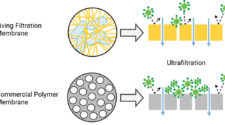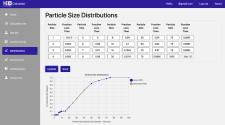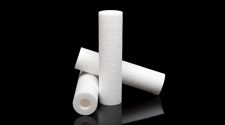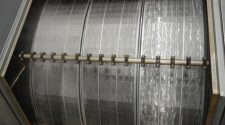January/February | Volume 34, No. 1
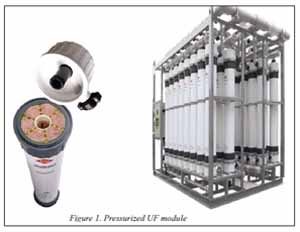 Water is a vital commodity needed for energy-generation and commercial and industrial operations. Industrial reverse osmosis (RO) applications provide water for manufacturing, fabricating, processing, washing, steam generation and cooling, and for incorporating into the products themselves. Thus, it can be understood why industry is one of the largest consumers of water worldwide, accounting for approximately 22 percent of the total global water usage. Consequently, increasing water scarcity has driven companies to seek out both time-tested and new ways to purify water and promote water reuse that are both cost-effective and environmentally conscious. The driver for change is both the increasing price of water and the access to good quality water in close proximity to factories, especially in areas suffering from natural water scarcity.
Water is a vital commodity needed for energy-generation and commercial and industrial operations. Industrial reverse osmosis (RO) applications provide water for manufacturing, fabricating, processing, washing, steam generation and cooling, and for incorporating into the products themselves. Thus, it can be understood why industry is one of the largest consumers of water worldwide, accounting for approximately 22 percent of the total global water usage. Consequently, increasing water scarcity has driven companies to seek out both time-tested and new ways to purify water and promote water reuse that are both cost-effective and environmentally conscious. The driver for change is both the increasing price of water and the access to good quality water in close proximity to factories, especially in areas suffering from natural water scarcity.
Water demineralization using RO membranes has had a long and successful history in water treatment for industrial manufacturing. As industry strives for greater efficiency, reliability and compact system design, pressurized hollow-fiber ultrafiltration has become an increasingly appealing pre-treatment technology, both in new and existing industrial installations. With that said, there is a growing interest to evaluate ultrafiltration to replace existing pretreatment, especially in cases with varying feed water qualities, such as in regions that experience drought.
ULTRAFILTRATION 101
Ultrafiltration (UF) is a barrier technology with a pore size small enough to remove water pollutants, including silt, colloids, pathogens, and other organics. While other configurations are possible, UF membranes are commonly seen as hollow fibers bundled together in a pressure housing (Fig. 1). Filtration is performed by applying relatively low pressure (7-25 psi) that forces water through the walls of the hollow fibers. A wide range of polymers have been used in UF membranes, but polyvinylidene fluoride (PVDF) is the most commonly used today because it exhibits a strong balance of strength, elongation and chlorine and oxidant resistance.
UF modules that use an outside-in philosophy (Fig. 2) offer several advantages to inside-out configurations. First, there is more space on the outside of the fibers for solids to accumulate, so the treatment process can run longer between backwashes, making it easier to flush solids out and reduce fiber plugging. Second, there is more surface area on the outside of the fibers, so the same amount of water can be produced at lower flux, reducing the pressure drop through the fiber, thereby saving energy. Third, for vertically-mounted modules that use an outside-in flow path, an air scrub can be feasibly added before the permeate backwash and, in some cases simultaneously with the backwash, to help sweep foulants away.
The most common operation configuration with hollow-fiber UF is dead-end filtration. Low concentrations of chemicals, such as sodium hypochlorite (NaOCl), can be used during the backwash to aid the cleaning impact. During a typical backwash, chemicals are in contact with the fiber for a short period of time. On a less frequent basis (approximately once every 0.5-7 days), chemically-enhanced cleaning with longer contact time is often recommended. This involves adding a chemical cleaner, such as an acid, to remove colloids and inorganic salts from the membrane pores or a mixture of caustic and chlorine to remove organics or biofoulants. Even less frequently (approximately once every 1-3 months), UF modules can be cleaned more thoroughly by an offline clean-in-place (CIP) program. By combining these various cleaning methods, the performance of a UF module can be maintained for 5-10 years or more.
UF AS AN RO PRETREATMENT
Compared to conventional, non-membrane pretreatments, ultrafiltration offers higher efficiency in the removal of suspended solids, microorganisms and colloidal matter, which are all common causes of operational issues in RO systems. UF technology is more capable of handling varying feed water qualities and removes the risk of particle carry-over often seen in conventional filtration techniques. As well, UF is a suitable treatment technology for a variety of source waters, including surface water, sea water and wastewater. The more fluctuating or challenging the feed water source is, the better the benefits of UF are seen. Regardless of feed water type, UF sustains a constant supply of high-quality feed water to downstream RO, allowing a more compact and cost-efficient RO system design. By using UF systems, operators can improve uptime, water consistency and operational reliability performance.
Compared to conventional pretreatment, UF membranes provide high quality filtrate due to their fine pores, typically with turbidity below 0.1 NTU and SDI below 2 %/min. UF membranes can reject by size exclusion pathogens that are immune to chlorination techniques (e.g., Gryptosporidium and Giardia parasites). Despite requiring more focus on sustained permeability and productivity, UF systems also provide greater automation than conventional alternatives, including sand filters and multi-media filtration systems. UF produces more stable water quality without the need to monitor the filter or ripening time (breakthrough), or ensuring appropriate layering of multi-media after backwash.
The potential for lower downstream cost, based on better and more consistent water quality, can also be achieved with a UF system. UF as pretreatment allows higher design flux in the RO stage, as well as lower requirements for membrane cleaning, and, ultimately, lower replacement rates by enabling an RO feed water with lower fouling tendency. Installing an UF pretreatment to an existing RO facility could, for example, allow increased water production without expanding the RO stage itself. And, because of reduced chemical consumption and limited usage of coagulant in the UF process, there is a reduced environmental concern for wastewater disposal.
CASE STUDY: RETROFITTING TO UF
In 2010, an integrated UF-RO plant using UF technology was retrofitted to replace existing sand filters. The plant’s source water was good quality well water (approximately < 2 NTU of turbidity, <5 mg/L of TOC, < 5mg/L SS). UF was chosen as a pretreatment to ensure consistent supply of high-quality water and reduce overall operational costs. As a result of the retrofit, the RO system CIP frequency reduced from every 4-6 months when it was pretreated by the sand filters to none after more than two years of operation.
The process scheme can be seen in Figure 3. The UF system operates with a transmembrane pressure (TMP) in the range of 5.8-8.7 psi at an operational flux of 35 GFD, remaining stable by only regular, chemical free, backwash every 60 minutes with filtrate water. This corresponds to a UF plant recovery of over 95 percent. During the first year of operation, only one off-line chemical cleaning was conducted, and currently the CIP is performed every 4-6 months. The UF filtrate has an average turbidity below 0.05 NTU (100% below 0.1 NTU) and SDI15 < 0.5%/min, which makes it very suitable to feed the RO plant.
CASE STUDY: THROUGH RETROFIT
The second case study example comes from a power industry application, in which an integrated UF-RO membrane system was used to convert secondary municipal effluent to cooling towers and boiler feed water to be used in an industry that uses biomass for power generation. The main challenge of this plant was to treat water with highly variable water quality and total suspended solids (TSS) excursions, varying between 5-50 mg/L. When low pressure membrane filtration is discussed in this industry, the question centers around the difference between microfiltration and UF. Compared to RO, microfiltration and UF has much less standardization. Due to generally larger pore sizes, microfiltration membranes tend to operate at lower transmembrane pressure than UF, but sometimes it is overlooked that larger pore typically indicate less retention of contaminants. This particular plant was initially operated with a microfiltration pretreatment based on a different fiber material and pore size. The main reason for retrofit was due to the higher chlorine tolerance of the PVDF fiber material. Higher chlorine tolerance is a clear benefit when operated at waters with higher fouling potential and cleaning frequency. Apart from the membrane system, the majority of the auxiliary equipment, such as tanks, piping, feed, backwash and chemical dosing pumps, remained the same. This significantly reduced the cost of the retrofit. A two- month pilot trial preceded the final design and execution of the full-scale plant, which began operation in May 2011.
The system’s process description can be seen in Figure 4. The UF system is divided into two lines with 9 UF elements (829 ft2 active area) and operated to produce up to 350 gpm (265 gpm design capacity). The UF system operates with TMP in the vicinity of 5.8 psi at an operational flux of 26-35 GFD when membranes are clean, and can rise to 16 psi when membranes are fouled. Standard backwashes are performed with UF filtrate water are conducted every 50 minutes with regular chemically enhanced backwashes to ensure stable operation and maintain TMP. This cleaning strategy has demonstrated to be very efficient ÔÇö only one offline CIP had been performed after 10 months of operation. Change of the low-pressure membrane type has brought tangible benefits in the RO stage. The CIP frequency has been reduced from 1-2 weeks, with the former membrane pretreatment to a much more sustainable frequency of 3-4 months.
SUMMARY
Pressurized hollow-fiber UF has become as increasingly appealing as an RO pretreatment technology for industrial plants interested in cost-efficient system optimization and reliability, resulting in maximized water usage. In fact, ultrafiltration membrane treatment is likely to witness 15 percent compound annual growth from 2008 to 2015 globally, of which industrial wastewater applications are already on the rise. The use of UF provides several advantages, including improved filtrate water quality, lower footprint, lower RO stage cost, and the ability to cope with varying feed water qualities.
Increasing production volume and technological improvements have reduced capital cost of membrane systems and operating cost to the point that membrane treatment is now seen as a viable alternative in many water and wastewater applications. In addition to the more reliable water production and lower pretreated water operational costs, UF technology allows for the reduction of cleaning and maintenance frequency, as well as higher RO operational flux, ultimately leading to a potential reduction in the capital expenses of the RO system.
About the Author
Katariina Majamaa is the marketing manager at Dow Water & Process Solutions (DW&PS) for Heavy Industry markets. She is responsible for developing and implementing global short- to medium-term strategies with the objective to grow value for end users and for heavy industry applications requiring ultrafiltration, reverse osmosis, nanofiltration, ion exchange and fine particle filtration technologies. To contact her, email: kmajamaa@dow.com.





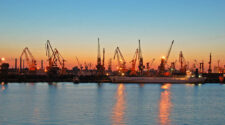
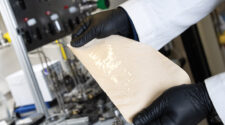
![Figure 1: Differentiation with membranes based on the famous Robeson diagram that plots selectivity vs. permeability. From Reference. [4]](https://www.filtnews.com/wp-content/uploads/IFN_042023_membranes_Figure1-225x125.jpg)
